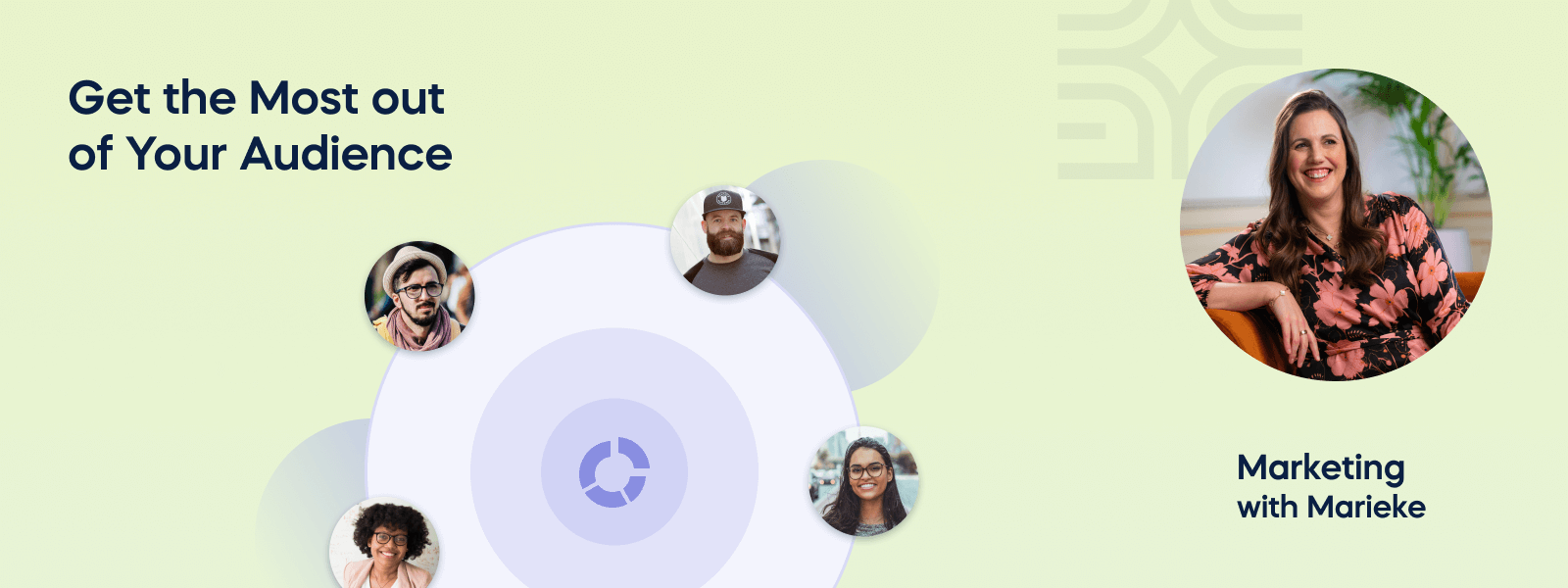Marieke van de Rakt discusses how to identify different segments of your audience and how to use that knowledge to tailor your approach to meet their specific needs.

Get to Know Your Audience and Get the Most Out of Your Audience!
Who did you build your website for? Who visits your site and why are they there?
We often think of our audience as a single, homogenous group. But unless your audience is extremely small, it is most likely quite diverse. And the different segments within your audience may benefit from different approaches.
In this blog post, we’ll discuss how to better understand your audience and how you can best leverage that knowledge!
Who is your online audience?
Before you do anything else, start with some thinking. Who is your website for? Who are you writing for and who are you designing products or services for? What are people searching for when they come to your site?
It’s easy to focus on what you think is important, but try to put yourself in your audience’s shoes. What do they need? What problems are they facing? And be honest with yourself: is your website truly equipped to help your audience with their problems?
Start exploring Google Analytics
After you’ve done some great thinking and reflecting, you should dive into your Google Analytics. This tool will help you to find all kinds of helpful information about your audience. Are they first-time visitors or do they return regularly? Did they find your site through Google, social media, or did they come directly to your site? Are they browsing on mobile or desktop? Where are they located an which pages are they viewing?
Understanding this information could really help you to understand your audience and their needs. Regular visitors, for instance, will likely prefer different content than first-timers.
Use surveys to deepen your insights
Google Analytics will only get you so far. You’ll need a more profound understanding to really tailor your content to the needs of a particular audience. A great way to do this is by asking visitors to complete an online questionnaire.
You can set up a pop-up survey on your website that shows up when people enter or are about to leave your site. You could also send a survey to the subscribers of your newsletters. Plenty of tools offer free accounts, which are suitable for most small businesses.
Surveys can reveal valuable information, but keep in mind that only a small, self-selecting group may respond. This means the results might not fully represent your entire online audience. However, if your audience is large enough, this could still yield useful insights. Make sure to include open-ended questions to capture the language your audience uses—this can be incredibly useful for crafting content that resonates and performs well in search engines.
Engage with your audience
Remember, your audience consists of real people. To truly understand them, my best advice is always to talk to them directly. Ask them what they like best about your website, products, or blog posts. Ask them why they come back to your website. Invite them to talk about their experience, and don’t be afraid of criticism. Ask them what they miss on your website and what information would help them.
Also, engage with your audience through social media and by reading comments on your blog posts. This can reveal which topics resonate most with them.
Check out your internal search results
If your website has an internal search functionality, you could check to see what your audience is searching for. This can provide valuable insights into the topics or products they are most interested in. It’ll also help you understand whether they want general information or are interested in buying your product or service.
How to benefit from your audience insights
Now that you’ve gathered all this information, how can you use it effectively?
Input for your SEO strategy
Understanding the specific language your audience uses, the type of information they seek and their search intent helps you craft a strong SEO strategy. With this knowledge, you can create targeted landing pages that guide your audience seamlessly through your website. By knowing which keywords your audience is likely to use when searching in Google and identifying the content they find most engaging, you can produce more of the content that resonates and drives traffic.
Input for your personalization strategy
Next to using your knowledge about your audience for your SEO strategy, use your audience insights to develop a personalization strategy. You know that your audience is diverse, so treat them as such—tailor content to meet different needs. For example, offer recurring customers specific content and provide country-specific content for different countries. Ensure that mobile and desktop users can easily navigate to the most interesting content.
Using PersonalizeWP, you can create dynamic content blocks that adjust based on user segments. For instance, new visitors could see an introductory video about your brand, while returning customers might see a special offer or their loyalty rewards points. This approach ensures that each user receives relevant and engaging content, improving their overall experience on your site.
Conclusion: put your audience knowledge to good use!
Understanding your audience has always been key to effective marketing, but we’ve never had a tool to help us properly monetize that knowledge. Personalization allows you to cater to the specific needs of different audience segments without creating separate websites. Regular visitors have different needs from first-time visitors, and by knowing what those are, you can improve their experience. That’s what personalization is all about and it can greatly boost your conversions. Check out our examples to see how personalization can work for you.
Explore the examples of how personalization can benefit your website and take your engagement to the next level!
Get Started with PersonalizeWP
Start your marketing journey today by installing the new and improved FREE version of PersonalizeWP, it’s packed with innovative and easy to use personalization rules. To learn more, why not try PersonalizeWP for free with an instant demo!
And hey, if you’re looking for even more functionality like visitor profiles and audience segmentation, upgrading to PersonalizeWP Pro unlocks our more advanced features. These tools help you target high-quality opportunities and deliver personalized content when it matters most.
